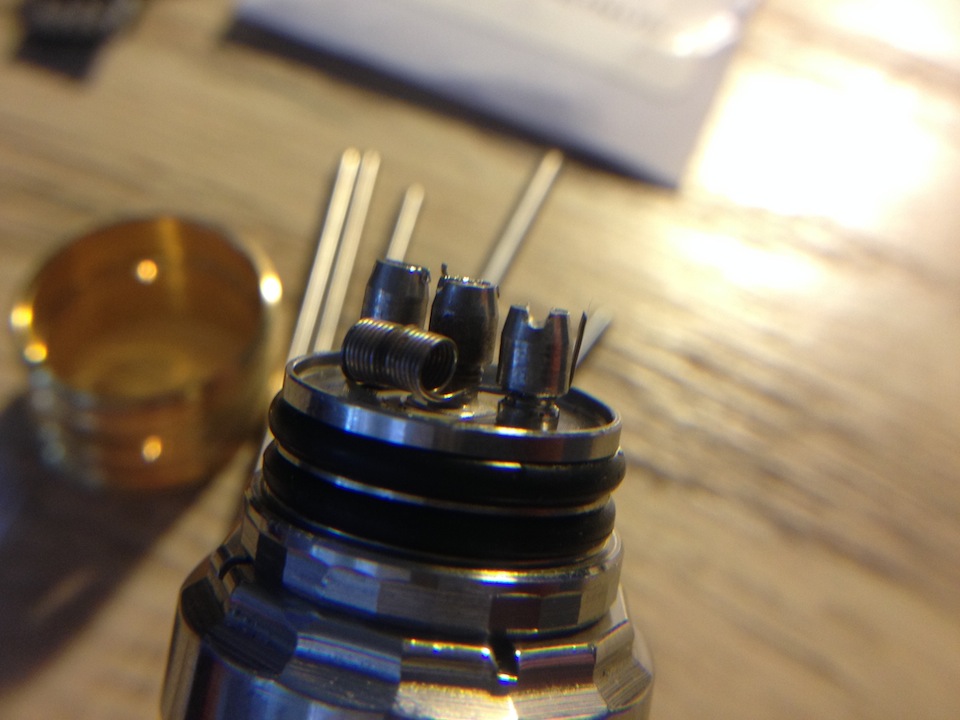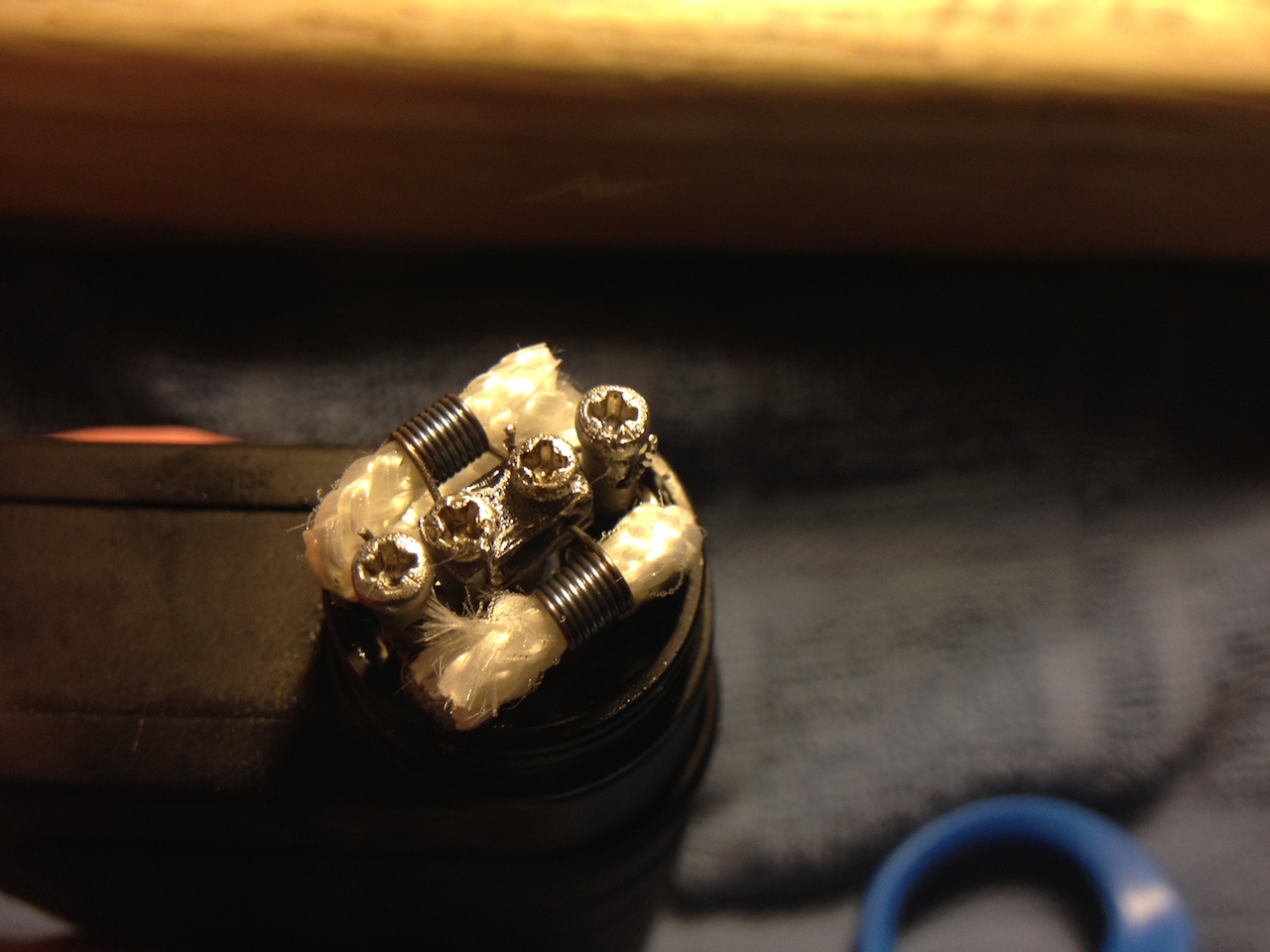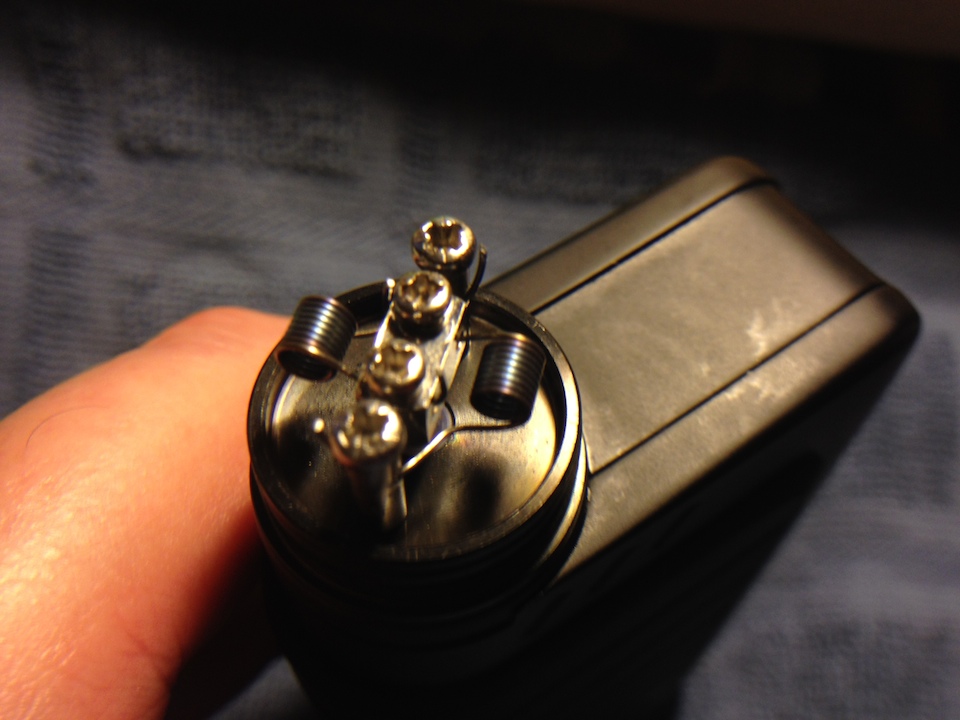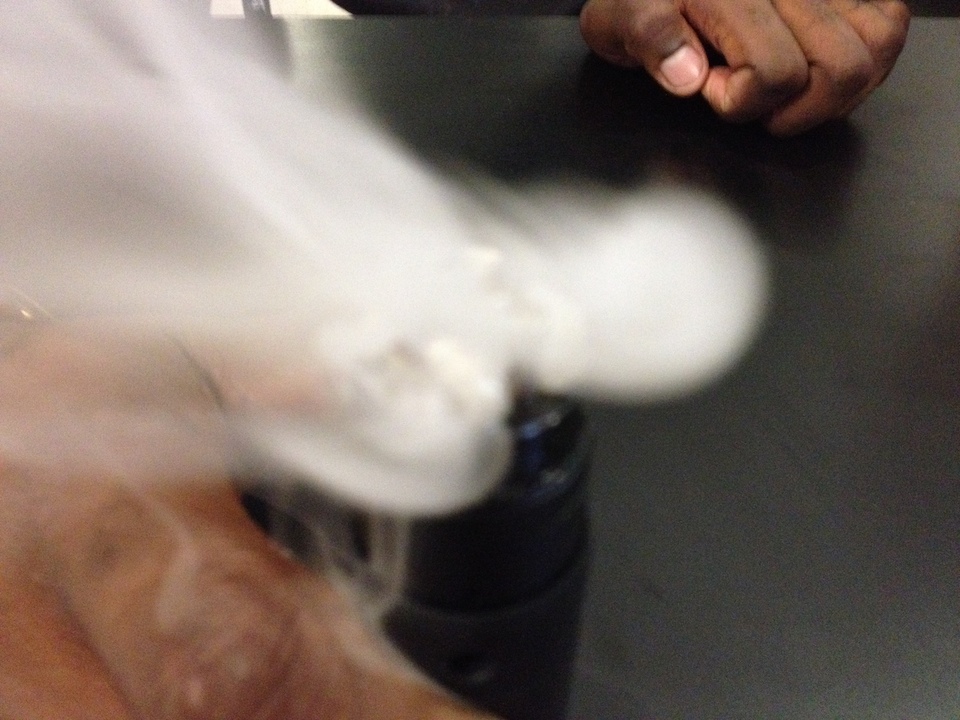Yes, strain wind a spaced coil to induce rigidity and impart form or shape to the wire.
Can the wire be strained prior to winding or does the crystalline structure retain its wound shape?
You can add strain to wire prior to winding. The form or method used to induce tension will alter the wire's shape which will be retained. To help visualize this consider using the edge of a scissors to draw a ribbon across it with tension producing a curl. You can use the same method with a bit or mandrel to arc or straighten wire as well. I introduced pin instrument screwdriver and pin vise winding as two approaches to achieving a precise final shape or form consistently.
I first thought strain was only useful to achieve adhesion in order to achieve the best oxidation.
First, what is adhesion? I use the term generically to mean
closest contact. So winding under tension as above allows the shaping of wire into a harder less malleable set of turns in close contact. This is what helps assure the most consistent oxidation, reduces the voltage at which point we may start achieving it and the overall amount of power required to begin seeing the development of beneficial alumina insulation. The outcome is the most important takeaway…we end up with an element in an optimal state of oxidation
and in a shape which is far more likely to be persistent.
It wants to be a coil.
Is the oxidation on a spaced coil as good as on a tmc?
I look at it the other way around. I think it certainly can be…for a spaced coil. However, since a t.m.c. (tensioned micro coil) initially delivers very high heat it allows a very minimal input of power and pulses to initiate the oxide surface. An open (or spaced) wind may require more pulsing as demonstrated by several users on ECF just to achieve the rigid shape as a first step. It's my belief that effective oxidation occurs after this. I'd add that rigidity (shape) is important for a spaced coil, in the case of Kanthal a surface ceramic layer is also a beneficial advantage in vaping as insulating the material from the vaped media itself.
So with a tmc the coil heats up evenly vs from the inside out?
Heating inside out is pretty common of a standard coil. Open winds fire pretty evenly too if the internal strain is fairly consistent. Not always. Plenty of pics of both all over ECF. Even heat distribution is characteristic of a tensioned micro coil when adhesion was good and oxidation developed well. None of these are perfect. There is always variation. The object is getting
to that best result. It's pretty evident when you've put the pieces together right…



And also in the vape regardless of preference. We're talking about the physics. More vapor, more flavor (production).
There must be a way to measure the exact force needed to achieve adhesion with different gauges, coil diameter, etc... Maybe coil master v7.0 will let you feed the wire on one side and a perfect tmc out the other

I'm sure there is. And I would ask, how useful would that be? There are too many variations in material composition, roundness specification, internal strain, even millimeter by millimeter. We could achieve I think a rough standard but it would just be close and not necessarily ideal for every kind of resistance, gauge and wire we might put to use to get to a great vape. I would have loved to have come up with a simple solution and patented a device to do that three years ago. However, my continued observations suggest that the skill of the average person to detect such wire variability and to repeatably arrive at
closest contact can't be beat. The economies of scale necessary to justify equipment as versatile in its operation to spin up our coils to that precision I believe would likely prove prohibitive. At least for now. So we as individual
human rebuilders have a huge advantage. And I'm not looking forward to the
vapebot replacing me. We might just disagree.
Detective Del Spooner: Human beings have dreams. Even dogs have dreams, but not you, you are just a machine. An imitation of life. Can a robot write a symphony? Can a robot turn a... canvas into a beautiful masterpiece?
Do you know the temperature that kanthal start to oxidize or if a coil not dry burned will oxidize?
You're not going to find a heck of a lot of commercial literature on the phenomenon of KA1 oxidation. Preparation is a rather specialized application. Manufacturers of equipment using thermal heating elements I'm sure have their own approaches and technology. Since we're talking about efficiency, they're no doubt cautious about their investment in methods.
What I can share is that with a t.m.c. the power required for dry fire pulsing is low and substantially below the red-yellow wire surface temperature boundary I suggest avoiding. Results very satisfactory and typically happen rather inconspicuously for the typical vaper. I haven't taught folks to focus on the oxidation rather achieving closest contact. You see, mastering or training the motor function, our physical skill, is the most important goal to consistent oxidation. Apart from
my brief above, an advanced search using "MacTechVpr" and oxidation sorted by
Latest will get you my latest posts on this including some instructions.
Then comes the process of discovery of proper oxidation for that final element. Each one unique in it's own way. And…there may be individual preference of extent depending on the juice, device, wattage, etc. Knowledge we start to develop
only once we start to see ourselves as we use and enjoy our gear and juice choices. So it's more important to understand the
method than to fix an objective and say this is it.
I like my steaks medium rare and scorched on the outside...needs to be appreciated first before we build the barbecue pit. But you need a baseline to get to that level of self-awareness. Consider the strain balanced wind as the most tunable and precise knife and fork you've ever devised.
There's a mod with kanthal tc now that could be useful in dry burning.
RB to me the vape temperature that's meaningful is how much heat a wind is putting down per sq. mm. Consider that the more consistent that is for your wind, the more efficient vaporization will be (the less spent to air, thermal loss). A t.m.c. is closer to that
theoretical wire optimum (or maximum) as you can get. That's the physics of it, I firmly believe. So I promote using the methods that get us there as directly as possible. That's what gets the new vaper over from the jump and the rest of us to the great vape we long for.
Best of luck!











